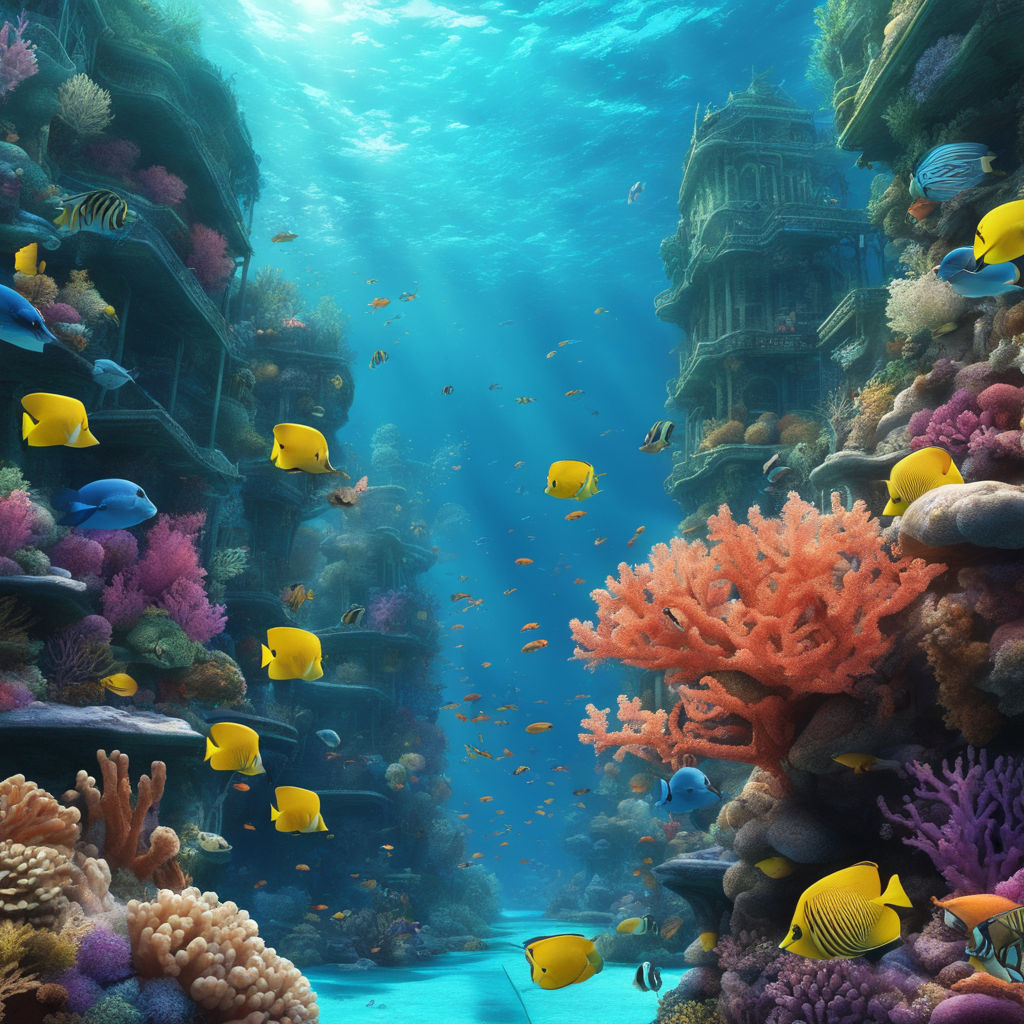Introduction
The world beneath the ocean’s surface is a mesmerizing realm, filled with an array of colors and life forms that captivate the imagination. Among the most enchanting inhabitants of this underwater wonderland are coral polyps. In this article, we embark on a journey to explore the intricate world of these fascinating organisms, uncovering their secrets and understanding their vital role in marine ecosystems.
Unveiling the Coral Polyps: Tiny Architects of the Reef
Coral polyps, though small in size, play a monumental role in the creation and maintenance of coral reefs. These tiny organisms belong to the phylum Cnidaria, a diverse group that also includes jellyfish and sea anemones. Imagine them as the architects of the reef, tirelessly building and shaping the structures that house a myriad of marine life.
Structure and Formation
Coral polyps form colonies, with each individual polyp consisting of a tubular body crowned by a ring of tentacles. These tentacles, armed with stinging cells called nematocysts, serve both as a means of defense and a tool for capturing prey. The polyps extract calcium carbonate from the seawater to build protective exoskeletons, contributing to the formation of the intricate coral reef structures.
The Symbiotic Dance
One of the most remarkable aspects of coral polyps is their symbiotic relationship with microscopic algae known as zooxanthellae. This partnership is the lifeblood of coral reefs, as the algae provide the polyps with essential nutrients through photosynthesis, while the polyps offer a safe haven for the algae to thrive. The vibrant colors of coral reefs are a result of the pigments in these symbiotic algae, creating a breathtaking underwater spectacle.
Threats to Coral Polyps: Navigating the Perils of Climate Change
While coral reefs are often hailed as vibrant havens of biodiversity, they face numerous threats, with climate change at the forefront. Rising sea temperatures and ocean acidification pose significant challenges to the delicate balance that sustains coral polyps and their ecosystems.
Coral Bleaching
One of the most alarming consequences of climate change is coral bleaching. Elevated sea temperatures cause the expulsion of the symbiotic algae from the coral tissues, robbing the polyps of their primary source of nutrition and leaving behind a stark, bleached appearance. Prolonged bleaching events can lead to the death of coral reefs, disrupting the intricate web of life they support.
Ocean Acidification
Another peril faced by coral polyps is ocean acidification, a consequence of increased carbon dioxide absorption by the oceans. Acidic conditions hinder the ability of polyps to build and maintain their calcium carbonate exoskeletons, rendering them more vulnerable to external threats. This weakening of the coral structure jeopardizes the entire ecosystem that relies on these intricate formations.
Conservation Efforts: Safeguarding the Enchanted Gardens of the Sea
In the face of these challenges, dedicated conservation efforts are underway to protect and restore coral reefs. Governments, non-profit organizations, and research institutions are collaborating to implement strategies aimed at mitigating the impact of climate change and promoting the resilience of coral ecosystems.
Marine Protected Areas
Establishing marine protected areas (MPAs) is a key strategy in safeguarding coral reefs. These designated zones restrict activities such as fishing and tourism, allowing ecosystems to recover and thrive. MPAs provide a sanctuary for coral polyps to rebuild and maintain the delicate balance of life within the reef.
Coral Restoration Initiatives
Innovative coral restoration initiatives are gaining momentum as scientists explore ways to bolster coral resilience. Techniques such as coral transplantation and the propagation of resilient coral varieties in nurseries offer hope for the regeneration of damaged reefs. These initiatives not only aim to preserve the beauty of coral reefs but also ensure the survival of the countless species that depend on them.
Exploring the Depths: A Call to Action
As we delve into the intricate world of coral polyps, it becomes evident that their survival is intertwined with the health of our planet’s oceans. The enchanting gardens they create are not only a source of awe-inspiring beauty but also vital hubs of biodiversity. It is our collective responsibility to act as stewards of the seas, advocating for policies that address climate change, reduce pollution, and promote sustainable practices to secure a future where coral polyps continue to thrive.
Together, Let’s Protect the Enchanted Gardens of the Sea.
Frequently Asked Questions (FAQs)
Q1: Why are coral reefs important? Coral reefs are crucial for biodiversity as they provide habitat and shelter for a vast array of marine species. They also act as natural barriers, protecting coastlines from erosion and storm damage.
Q2: How can individuals contribute to coral reef conservation? Individuals can make a difference by adopting sustainable practices, reducing carbon footprint, and supporting organizations dedicated to coral reef conservation. Responsible tourism and proper waste disposal also play a role in protecting these delicate ecosystems.
Q3: Can coral reefs recover from bleaching events? While some coral reefs can recover from bleaching events, the extent of recovery depends on various factors such as the severity of the bleaching, the duration of stress, and the overall health of the ecosystem. Conservation efforts, including coral restoration initiatives, are crucial in aiding recovery.
Note: The content in this article is for informational purposes only and does not substitute professional advice. Always consult with experts for specific concerns regarding coral reefs and marine ecosystems.

